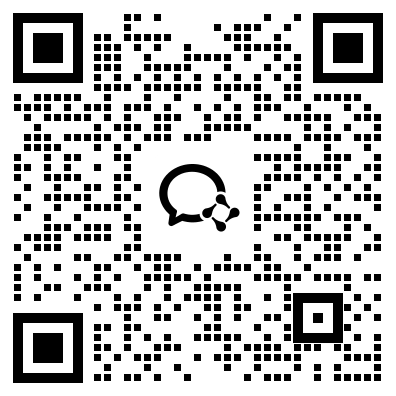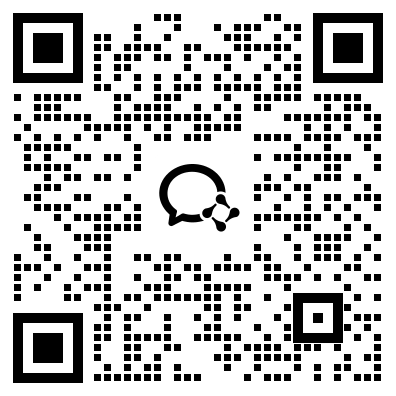特惠-26考研冲刺
特惠-27考研课
双证-在职硕士
免联考-同等学力
26考研-肖八笔记
26考研-时政刷题
26考研-作文押题
26考研-全套真题
26考研-提前估分
保研-路线图
27考研-智能择校
27考研-英语测评
27考研-新大纲对比
热门-计算机择校

扫码加入训练营
牢记核心词
学习得礼盒
各科全方位深度指导内容请参考专题【2015考研复习计划】,总有一种适合你的学习方法。
考研英语翻译素材: 压马路吸引力日渐下降
A number of recent books have lauded the connection between walking - just for its own sake - and thinking. But are people losing their love of the purposeless walk?
Walking is a luxury in the West. Very few people, particularly in cities, are obliged to do much of it at all. Cars, bicycles, buses, trams, and trains all beckon.
Instead, walking for any distance is usually a planned leisure activity. Or a health aid. Something to help people lose weight. Or keep their fitness. But there's something else people get from choosing to walk. A place to think.
Wordsworth was a walker. His work is inextricably bound upwith tramping in the Lake District. Drinking in the stark beauty. Getting lost in his thoughts.
Charles Dickens was a walker. He could easily rack up 20 miles, often at night. You can almost smell London's atmosphere in his prose. Virginia Woolf walked for inspiration. She walked out from her homeat Rodmell in the South Downs. She wandered through London's parks.
Henry David Thoreau, who was both author and naturalist, walked and walked and walked. But even he couldn't match the feat of someone like Constantin Brancusi, the sculptor who walked much of the way between his home village in Romania and Paris. Or indeed Patrick Leigh Fermor, whose walk from the Hook of Holland to Istanbul at the age of 18 inspired several volumes of travel writing. George Orwell, Thomas De Quincey, Nassim Nicholas Taleb, Friedrich Nietzsche, Bruce Chatwin, WG Sebald and Vladimir Nabokov are just some of the others who have written about it.
From recent decades, the environmentalist and writer John Francis has been one of the truly epic walkers. Francis was inspired by witnessing an oil tanker accident in San Francisco Bay to eschew motor vehicles for 22 years. Instead he walked. And thought. He was aided by a paral
llel pledge not to speak which lasted 17 years.
But you don't have to be an author to see the value of walking. A particular kind of walking. Not the distance between porch and corner shop. But a more aimless pursuit.
In the UK, May is National Walking Month. And a new book, A Philosophy of Walking by Prof Frederic Gros, is currently the object of much discussion. Only last week, a study from Stanford Universityshowed that even walking on a treadmill improved creative thinking.
Across the West, people are still choosing to walk. Nearly every journey in the UK involves a little walking, and nearly a quarter of all journeys are made entirely on foot, according to one survey. But the same study found that a mere 17% of trips were "just to walk". And that included dog-walking.
It is that "just to walk" category that is so beloved of creative thinkers.
"There is something about the pace of walking and the pace of thinking that goes together. Walking requires a certain amount of attention but it leaves great parts of the time open to thinking. I do believe once you get the blood flowing through the brain it does start working more creatively," says Geoff Nicholson, author of The Lost Art of Walking.
"Your senses are sharpened. As a writer, I also use it as a form of problem solving. I'm far more likely to find a solution by going for a walk than sitting at my desk and 'thinking'."
Nicholson lives in Los Angeles, a city that is notoriously car-focused. There are other cities around the world that can be positively baffling to the evening stroller. Take Kuala Lumpur, the Malaysian capital. Anyone planning to walk even between two close points should prepare to be patient. Pavements mysteriously end. Busy roads need to be traversed without the aid of crossings. The act of choosing to walk can provoke bafflement from the residents.
"A lot of places, if you walk you feel you are doing something self-consciously. Walking becomes a
radical act," says Merlin Coverley, author of The Art of Wandering: The Writer as Walker.
But even in car-focused cities there are fruits for those who choose to ramble. "I do most of my walking in the city - in LA where things are spread out," says Nicholson. "There is a lot to look at. It's urban exploration. I'm always looking at strange alleyways and little corners."
Nicholson, a novelist, calls this "observational"walking. But his other category of walking is left completely blank. It is waiting to be filled with random inspiration.
Not everybody is prepared to wait. There are many people who regard walking from place to place as "dead time" that they resent losing, in a busy schedule where work and commuting takes them away from home, family and other pleasures. It is viewed as "an empty space that needs to be filled up", says Rebecca Solnit, author of Wanderlust: A History of Walking.
Many now walk and textat the same time. There's been an increase in injuries to pedestriansin the US attributed to this. One study suggested texting even changed the manner in which people walked.
It's not just texting. This is the era of the "smartphone map zombie"- people who only take occasional glances away from an electronic routefinder to avoid stepping in anything or being hit by a car.
"You see people who don't get from point A to point B without looking at their phones," says Solnit. "People used to get to know the lay of the land."
People should go out and walk free of distractions, says Nicholson. "I do think there is something about walking mindfully. To actually be there and be in the moment and concentrate on what you are doing."
And this means no music, no podcasts, no audiobooks. It might also mean going out alone.
CS Lewis thought that even talking could spoil the walk. "The only friend to walk with is one who so exactly shares your taste for each mood of the countryside that a glance, a halt, or at most a n
udge, is enough to assure us that the pleasure is shared."
The way people in the West have started to look down on walking is detectable in the language. "When people say something is pedestrian they mean flat, limited in scope," says Solnit.
Boil down the books on walking and you're left with some key tips:
Walk further and with no fixed route
Stop texting and mapping
Don't soundtrack your walks
Go alone
Find walkable places
Walk mindfully
Then you may get the rewards. "Being out on your own, being free and anonymous, you discover the people around you," says Solnit. 查看译文
最近许多书都赞扬走路这一行为本身和思考的联系。但是人们是否正逐渐对漫无目的的行走失去兴趣?
走路在西方是件奢侈事。少有人会去步行,尤其是在城市里。汽车、自行车、公交车、电车和火车,这些都更吸引人。
走路反而通常是一种有计划的休闲活动,或者是保健运动,是有助于减肥或保持健康的活动。但是人们还可以从步行中得到其它一些东西,一种思考的环境。
华兹华斯(Wordsworth)喜欢步行。他的工作让他不可避免地要经常在湖区行走,在纯粹质朴的美景中饮酒,沉浸到思考之中。
查尔斯•狄更斯(Charles Dickens)也喜欢走路。他可以很轻松地走完20英里,而且经常是在夜里。从他的文章中你几乎可以嗅到伦敦的气息。弗吉尼亚•伍尔夫(Virginia Woolf)为寻求灵感而行走,她从家乡南唐斯的罗德麦尔出发,在伦敦的公园里漫步。
自然主义者、作家亨利•大卫•梭罗(Henry David Thoreau)则每天都在行走。但即使是他也无法做到康斯坦丁•布朗库西(Constantin Brancusi)那样的壮举。布朗库西是一位雕塑家,从罗马尼亚的农村老家到巴黎这一路,他几乎都是走着去的。更厉害的是帕特里克•莱斯•法莫(Patrick Leigh Fermor),他18岁时从荷兰角港徒步到伊斯坦布尔,旅程给了他灵感,让他写出了好几卷游记。乔治•奥威尔(George Orwell)、托马斯•德•昆西(Thomas De Quincey)、纳西姆•尼古拉斯•塔勒布(Nassim Nicholas Taleb)、弗里德里希•尼采(Friedrich Nietzsche)、布鲁斯•查特文(Bruce Chatwin)、 温弗里德•格奥尔格•泽巴尔德(WG Sebald)、弗拉基米尔•纳博科夫(Vladimir Nabokov)也都写过关于行走的文章。
【英语翻译】资料这里有↑↑↑

 资料下载
资料下载
2014年-2025年考研历年真题汇总
发布时间:2024-04-25扫码添加【考研班主任】
即可领取资料包
考研大纲PDF电子版下载-历年(附解析)
发布时间:2024-04-25扫码添加【考研班主任】
即可领取资料包
2026年考研政数英备考资料zip压缩包
发布时间:2024-04-25扫码添加【考研班主任】
即可领取资料包
考研英语大纲词汇5500打印版(基础必备)
发布时间:2024-04-25扫码添加【考研班主任】
即可领取资料包
新东方在线考试模拟题【12套】
发布时间:2024-04-25扫码添加【考研班主任】
即可领取资料包
2026年考研专业课知识点总结
发布时间:2024-04-25扫码添加【考研班主任】
即可领取资料包
新东方考研资料下载地址
发布时间:2023-05-17新东方在线考研资料合集
下载方式:微信扫码,获取网盘链接

目录:
1.2013-2023年近10年政数英真题及解析PDF版(新东方)
2.2013-2023年专业课考试历年真题及解析PDF版
3.24考研复习备考资料大合集:大纲+备考资料+词汇书+考前押题+自命题
资料介绍:
1.2013-2023年近10年政数英真题及解析PDF版(新东方)
 、
、
2.2013-2023年专业课考试历年真题及解析PDF版


3.24考研复习备考资料大合集

3.24考研复习备考资料:考研大纲

3.24考研复习备考资料:政数英备考资料+自命题真题

------------------
考研备考过程中,尤其是专业课部分,参考往年的考试真题,对于我们的复习有更好的帮助。北京大学考研真题资料都有哪些?小编为大家进行了汇总。
北京大学考研真题资料-公共课

北京大学考研真题资料-专业课


以上就是关于“北京大学考研真题资料下载(历年汇总)”的整理,更多考研资料下载,请关注微信获取下载地址。
2024考研公共课必背知识点汇总
发布时间:2023-01-03扫码添加【考研班主任】
即可领取资料包
2013-2023考研历年真题汇总
发布时间:2023-01-03扫码添加【考研班主任】
即可领取资料包
考研英语大纲词汇(PDF可打印)
发布时间:2023-01-03扫码添加【考研班主任】
即可领取资料包
2024考研专业课知识点总结
发布时间:2023-01-03扫码添加【考研班主任】
即可领取资料包
2023考研政治 内部押题 PDF
发布时间:2022-11-16扫码添加【考研班主任】
即可领取资料包
徐涛:23考研预测六套卷
发布时间:2022-11-16扫码添加【考研班主任】
即可领取资料包
考研政数英冲刺资料最新整理
发布时间:2022-11-16扫码添加【考研班主任】
即可领取资料包
23考研答题卡模板打印版
发布时间:2022-11-16扫码添加【考研班主任】
即可领取资料包
2023考研大纲词汇5500PDF电子版
发布时间:2022-07-28扫码添加【考研班主任】
即可领取资料包
考研历年真题(公共课+专业课)
发布时间:2022-07-28扫码添加【考研班主任】
即可领取资料包
考研英语阅读100篇附解析及答案
发布时间:2022-01-07扫码添加【考研班主任】
即可领取资料包
新东方考研学霸笔记整理(打印版)
发布时间:2022-01-07扫码添加【考研班主任】
即可领取资料包
2001-2021年考研英语真题答案(可打印版)
发布时间:2022-01-07扫码添加【考研班主任】
即可领取资料包
考研英语词汇5500(完整版下载)
发布时间:2022-01-07扫码添加【考研班主任】
即可领取资料包
2022考研政审表模板精选10套
发布时间:2022-01-07扫码添加【考研班主任】
即可领取资料包
历年考研真题及答案 下载
发布时间:2021-12-09扫码添加【考研班主任】
即可领取资料包
考研政审表模板汇总
发布时间:2020-06-17扫码添加【考研班主任】
即可领取资料包
近5年考研英语真题汇总
发布时间:2020-06-17扫码添加【考研班主任】
即可领取资料包
考研英语大纲词汇5500
发布时间:2020-06-17扫码添加【考研班主任】
即可领取资料包
2022考研12大学科专业排名汇总
发布时间:2019-11-21扫码添加【考研班主任】
即可领取资料包
2023考研政治复习备考资料【珍藏版】
发布时间:2019-11-21扫码添加【考研班主任】
即可领取资料包
考研英语万能模板+必备词汇+范文
发布时间:2019-11-21扫码添加【考研班主任】
即可领取资料包
考研数学一、二、三历年真题整理
发布时间:2019-11-21扫码添加【考研班主任】
即可领取资料包

添加班主任领资料
添加考研班主任
免费领取考研历年真题等复习干货资料

 推荐阅读
推荐阅读
为了让考研的同学更高效地复习考研英语,新东方在线考研频道整理了2026考研英语翻译的三个过程,考研的同学可以了解一下,希望对大家有所帮助。
为了让考研的同学更高效地复习考研英语,新东方在线考研频道整理了2026考研英语翻译选词要多样化,考研的同学可以了解一下,希望对大家有所帮助。
为了让考研的同学更高效地复习考研英语,新东方在线考研频道整理了2026考研英语翻译用词要简洁有力,考研的同学可以了解一下,希望对大家有所帮助。
为了让考研的同学更高效地复习考研英语,新东方在线考研频道整理了2026考研英语翻译用词要通俗易懂,考研的同学可以了解一下,希望对大家有所帮助。
为了让考研的同学更高效地复习考研英语,新东方在线考研频道整理了2026考研英语翻译选词要贴切,考研的同学可以了解一下,希望对大家有所帮助。

 资料下载
资料下载
扫码添加【考研班主任】
即可领取资料包
扫码添加【考研班主任】
即可领取资料包
扫码添加【考研班主任】
即可领取资料包
扫码添加【考研班主任】
即可领取资料包
扫码添加【考研班主任】
即可领取资料包
扫码添加【考研班主任】
即可领取资料包
新东方在线考研资料合集
下载方式:微信扫码,获取网盘链接

目录:
1.2013-2023年近10年政数英真题及解析PDF版(新东方)
2.2013-2023年专业课考试历年真题及解析PDF版
3.24考研复习备考资料大合集:大纲+备考资料+词汇书+考前押题+自命题
资料介绍:
1.2013-2023年近10年政数英真题及解析PDF版(新东方)
 、
、
2.2013-2023年专业课考试历年真题及解析PDF版


3.24考研复习备考资料大合集

3.24考研复习备考资料:考研大纲

3.24考研复习备考资料:政数英备考资料+自命题真题

------------------
考研备考过程中,尤其是专业课部分,参考往年的考试真题,对于我们的复习有更好的帮助。北京大学考研真题资料都有哪些?小编为大家进行了汇总。
北京大学考研真题资料-公共课

北京大学考研真题资料-专业课


以上就是关于“北京大学考研真题资料下载(历年汇总)”的整理,更多考研资料下载,请关注微信获取下载地址。
扫码添加【考研班主任】
即可领取资料包
扫码添加【考研班主任】
即可领取资料包
扫码添加【考研班主任】
即可领取资料包
扫码添加【考研班主任】
即可领取资料包
扫码添加【考研班主任】
即可领取资料包
扫码添加【考研班主任】
即可领取资料包
扫码添加【考研班主任】
即可领取资料包
扫码添加【考研班主任】
即可领取资料包
扫码添加【考研班主任】
即可领取资料包
扫码添加【考研班主任】
即可领取资料包
扫码添加【考研班主任】
即可领取资料包
扫码添加【考研班主任】
即可领取资料包
扫码添加【考研班主任】
即可领取资料包
扫码添加【考研班主任】
即可领取资料包
扫码添加【考研班主任】
即可领取资料包
扫码添加【考研班主任】
即可领取资料包
扫码添加【考研班主任】
即可领取资料包
扫码添加【考研班主任】
即可领取资料包
扫码添加【考研班主任】
即可领取资料包
扫码添加【考研班主任】
即可领取资料包
扫码添加【考研班主任】
即可领取资料包
扫码添加【考研班主任】
即可领取资料包
扫码添加【考研班主任】
即可领取资料包

 阅读排行榜
阅读排行榜
 相关内容
相关内容